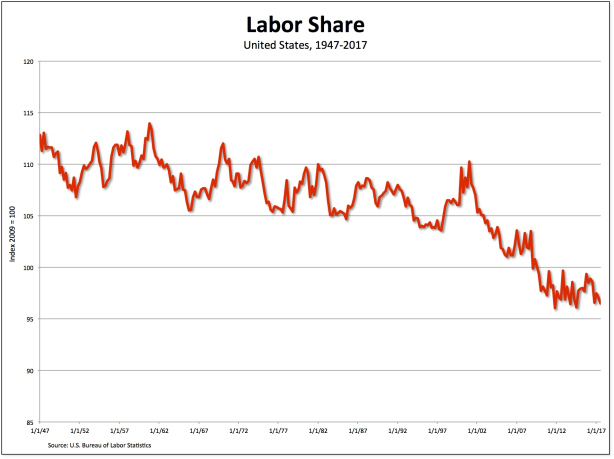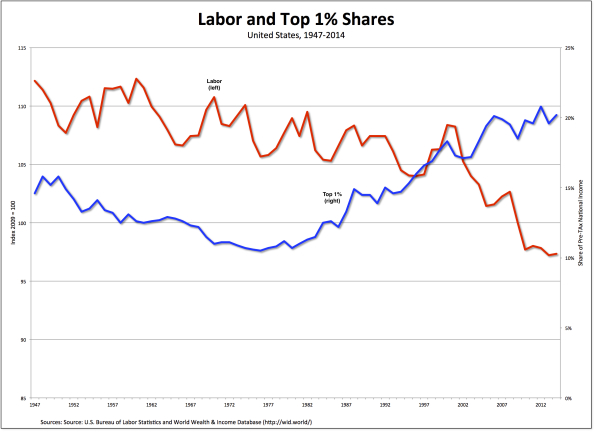From David Ruccio The United States is now more than eight years out from the end of the Great Recession and the one-side nature of the recovery is, or at least should be, clear for all to see. Even as unemployment has dipped below the so-called “natural rate,” workers are far from recovering all they’ve last in the past decade. According to the official data illustrated in the chart above, the labor share of national income remains just above the lowest level it reached in the entire postwar period. Using 100 in 2009 as the index value, the current labor share has fallen to 96.5—down from 110.24 in 2001 and 114 in 1960. The question is, how low can the labor share go? Update
Topics:
David F. Ruccio considers the following as important: Uncategorized
This could be interesting, too:
tom writes The Ukraine war and Europe’s deepening march of folly
Stavros Mavroudeas writes CfP of Marxist Macroeconomic Modelling workgroup – 18th WAPE Forum, Istanbul August 6-8, 2025
Lars Pålsson Syll writes The pretence-of-knowledge syndrome
Dean Baker writes Crypto and Donald Trump’s strategic baseball card reserve
from David Ruccio
The United States is now more than eight years out from the end of the Great Recession and the one-side nature of the recovery is, or at least should be, clear for all to see.
Even as unemployment has dipped below the so-called “natural rate,” workers are far from recovering all they’ve last in the past decade.
According to the official data illustrated in the chart above, the labor share of national income remains just above the lowest level it reached in the entire postwar period. Using 100 in 2009 as the index value, the current labor share has fallen to 96.5—down from 110.24 in 2001 and 114 in 1960.
The question is, how low can the labor share go?
Update


